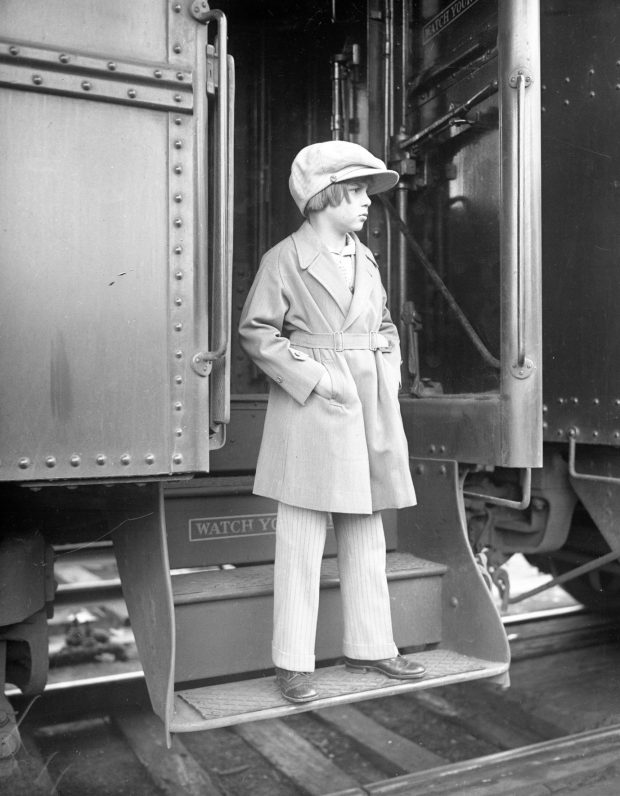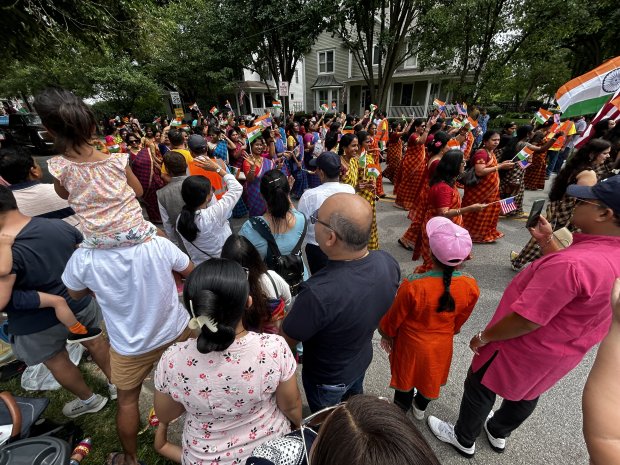With just four months remaining in his quest to read every Chicago Tribune published in 1924, Paul Durica is taking his discoveries to the streets — and the classroom.
Durica, who is also director of exhibitions for the Chicago History Museum, will provide one-hour weekly seminars on what Chicago was like 100 years ago through The Newberry. The journey will end with a 75-minute walking tour, one of Durica’s specialties, of the city’s landmarks. The course, which begins Sept. 10, is full, but sign up for the waitlist if you’ve enjoyed Durica’s dispatches.
Here are a few of his favorite finds from August 1924, with many more chronicled on Durica’s website, pocketguidetohell.com.
Aug. 6, 1924: ‘Mayor for 10 minutes’
Jackie Coogan at a train station on April 30, 1925. Coogan was one of Hollywood’s highest paid actors by 1923. (Chicago Tribune historical photo)
Jackie Coogan, then a child actor who would later portray Uncle Fester in “The Addams Family” TV series, came to Chicago for a 12-hour visit. The rainy day saw the 9-year-old — dressed in a navy blue sailor outfit — collect money for charity and fete other children who had done the same.
Chicago Mayor William “Decent” Dever, Boy Scouts and Campfire Girls watched as Coogan pounded the gavel in City Council chambers before he met with fans in Garfield and Washington parks before he arrived at the Hotel Sherman as guest of honor at a “poor orphans” benefit dinner.
“He didn’t talk — they didn’t want him to,” Tribune reporter Maurine Watkins wrote about Coogan’s star-struck fans. “Just wanted to see him, to be near him, to touch him half in awe, if they could.”
Coogan later spent years fighting to get the millions he had earned as a child star, but which had been squandered by his parents. By the late 1930s, he was broke and all but unknown to moviegoers and the movie industry. But he continued to work in small character parts and, by the 1950s, in television. Coogan died in 1984.
Aug. 15, 1924: Circus comes to Chicago
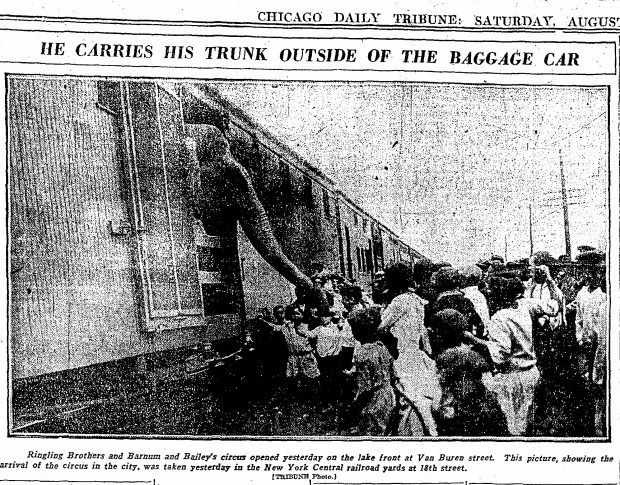
Leaving Milwaukee in a 100-car procession of train cars, the Ringling Bros. and Barnum & Bailey Circus arrived in Chicago and immediately pitching its big-top tent in Grant Park opposite Van Buren Street.
Unfortunately, no parade heralded the traveling circus’ arrival.
“The press agent takes pains to point out that this is Chicago’s fault. If the town weren’t so large, with so many automobiles and street cars and subway entrances cluttering up the downtown streets, the five herds of elephants and the lions and even Mr. John Daniel II (a gorilla) would be glad to parade down the boulevard for all the citizenry to see,” the Tribune reported. “The press agent wants that point made clear.”
Aug. 22, 1924: ‘Cure hatred by love,’ Leopold and Loeb attorney urges
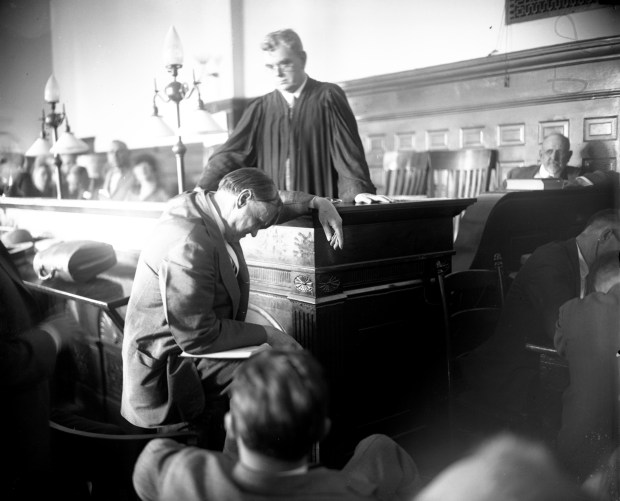
Clarence Darrow, the attorney for confessed killers Nathan Leopold Jr. and Richard Loeb, spoke for 12 hours over two days as part of closing arguments in their trial. By entering guilty pleas, Darrow didn’t have to persuade 12 jurors to spare his clients the hangman’s noose — the judge had the ultimate say.
“Your honor stands between the past and the future. You may hang these boys; you may hang them by the neck till they are dead. But in doing it you will turn your face toward the past,” Darrow said. “I am pleading for the future.”
Darrow’s eloquent plea had the desired effect. Leopold and Loeb’s lives were spared — they were sentenced to life in prison.
Aug. 21-24, 1924: Communication from Mars?

After wireless operators in British Columbia picked up mysterious sounds — a low note that ended with a “zipp” — some wondered if Mars was attempting to communicate with Earth.
5 things to know about Yerkes Observatory’s 121-year history
“You see, the opportunity of a couple lifetimes is almost at hand,” the Tribune reported. “This here now Mars, the star which causes all our wars and was responsible for such goings on as the league of nations, is sneaking up right alongside our earth tonight and tomorrow, and pacifists are showing signs of alarm.”
And though astronomers in other parts of the United States observed what they thought were signs of life on the red planet, “jumpy” conditions prevented local experts from a clear view.
Aug. 25, 1924: More housing needed for Chicago’s Black community
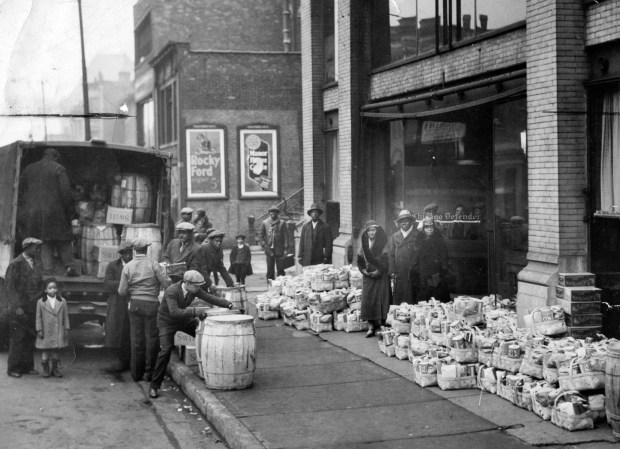
With an estimated 150,000 Black people living in Chicago — and another 100,000 arriving by 1930 due to the Great Migration — the Tribune reported the city still desperately needed new housing for these new residents. The concern wasn’t new — more than three years prior a commission appointed after the race riots of 1919 came to the same conclusion.
Also, rent charged for available housing was too high.
“For like quarters, the Negro tenant is generally charged more than a white, even in the districts of greatest squalor, a practice condemned in the commission’s report,” the Tribune reported.
Want more vintage Chicago?
- Become a Tribune subscriber: It’s just $12 for a 1-year digital subscription
- Follow us on Instagram: @vintagetribune
Thanks for reading!
Join our Chicagoland history Facebook group and follow us on Instagram for more from Chicago’s past.
Have an idea for Vintage Chicago Tribune? Share it with Ron Grossman and Marianne Mather at rgrossman@chicagotribune.com and mmather@chicagotribune.com


